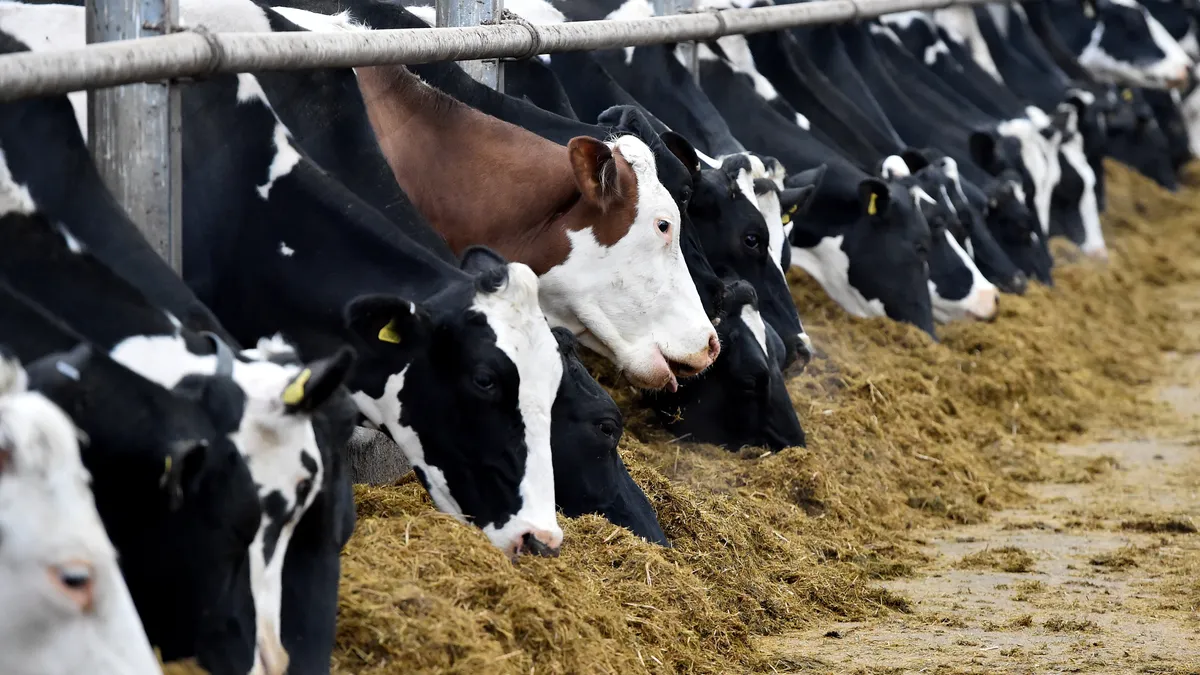Dive Brief:
-
The U.S. Department of Agriculture lowered its milk production outlook for next year as farmers thin herds in the face of higher costs and weaker prices.
-
According to the agency’s July outlook, milk production for 2024 is expected to be down 200 million pounds compared to last month’s estimates. This is driven by an updated reduction of 5,000 cows and weaker estimated milk yields.
-
Producer milk prices hit a historic high in 2022, peaking at $27.30 per hundredweight last summer. They have since declined to $19.30 in May due to larger milk supplies, squeezing margins to a record low as feeding costs remain over $14 per hundredweight.
Dive Insight:
Milk prices often strengthen during the warmer months as more people eat ice cream and other dairy treats, but an oversupply of milk has kept producer prices low.
This has pressured some farmers to cull their herds especially as input costs rise and drought conditions continue, according to USDA’s report. The dry climate is also making it more difficult for farmers to get forage for their cows.
Last year, when prices for milk producers were much higher, herd sizes expanded. As a result, there were 13,000 more cows in May compared to the same period last year, bolstering milk yields and production numbers.
Meanwhile, higher alfalfa hay prices have driven up feed costs, pressuring dairy profits. The dairy farm margin, calculated by USDA, declined to $4.83 in May, which is $7.68 lower than last year and considered the “lowest dairy farm margin so far in 2023.”
As a result, dairy cow slaughter has been above 2022 levels in recent weeks. Slaughter numbers have ranged between 5,000 and 8,000 more head per week, according to USDA data.
Atypical conditions have kept milk producer prices low during the summer months, such as weaker demand and unpredictable weather. According to Texas A&M AgriLife Extension Service experts, spring conditions often provide enough forage supplies to push milk output higher, before slowing down in the heat of summer, but overall milk demand is struggling a bit.
The cost of retail ice cream, cheese and other dairy products are higher this summer over last year, while fresh whole milk is 4% lower, according to the Labor Department’s latest June Consumer Price Index. Meanwhile, the category featuring milk alternatives made from soy, almond, oat and rice increased 7.4%.











